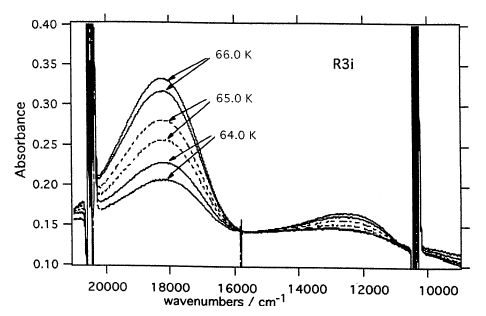-
Light-induced valence-state switching in BaFCl:La and SrFCl:La
M. Matsarski, D. Lovy, H. Bill and K.M. Mohnhaupt
Physical Review B, 68 (20) (2003), p205113


DOI:10.1103/PhysRevB.68.205113 | unige:3512 | Abstract | Article PDF | Article PS (gzipped)

A tetragonal La2+ center (symmetry C4v) was identified in single crystals of BaFCl and SrFCl doped with lanthanum with the aid of electron paramagnetic resonance (EPR)/electron-nuclear double resonance (ENDOR). This center forms a donor-acceptor couple with initially present F(F-) centers. Switching takes place by illumination of appropriate wavelength. The kinetics of the process was monitored by EPR as La2+ and the unswitched F center are paramagnetic. The results of our experimental investigation of this kinetics are presented. A foregoing spectroscopic characterization of the La2+ center allowed one to identify a d-d (the B1-E) transition, a charge-transfer band (for BaFCl at 10940cm-1 and at 17890cm-1, respectively) and to obtain a value of 710cm-1 for the spin-orbit coupling constant in the ground state. In order to narrow the choice of possible acceptor-donor partners a detailed EPR/optical search was further done to identify a number of lattice defects and oxygen centers—in addition to a La-oxygen molecular structure.
